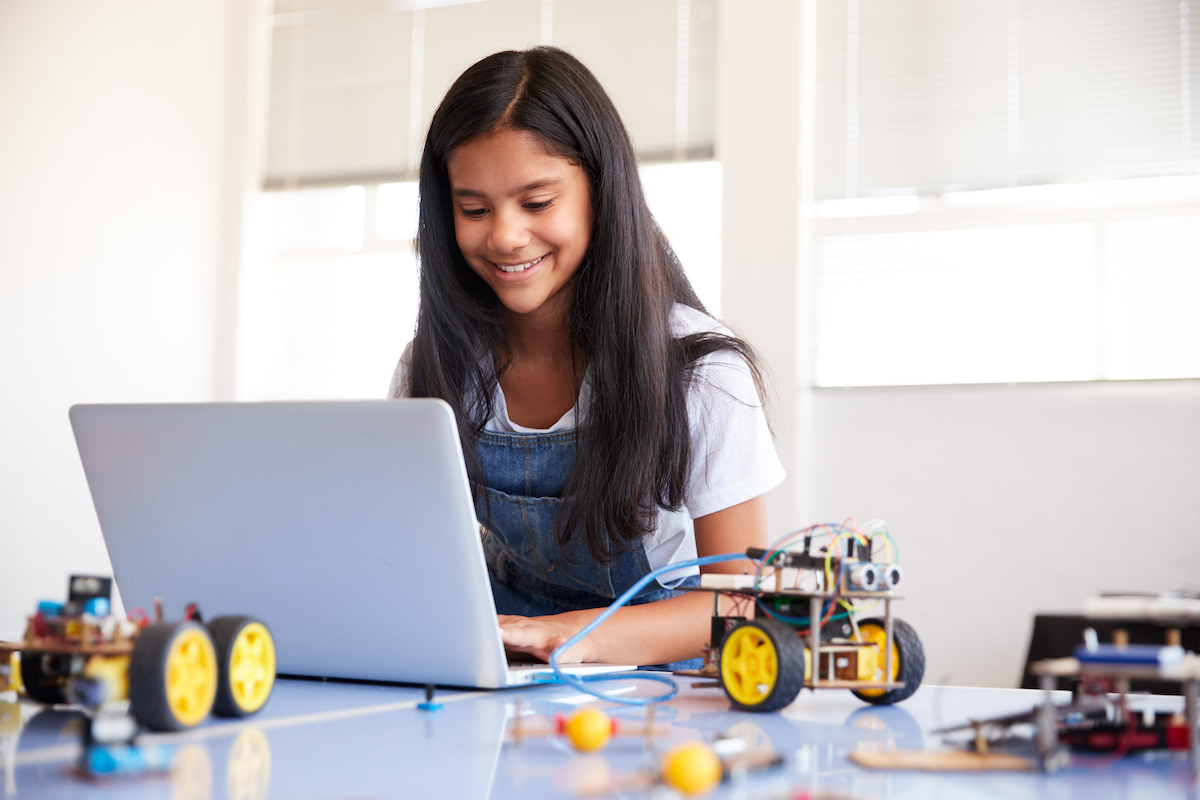It is now known as “C/S,” shorthand for a $1.5 million dollar National Science Foundation-funded Connected Spaces project to create a suite of digital tools that will enable middle and high school learners who are geographically-distanced to collaborate on technology rich maker projects.
But not quite a year ago it was an idea yet to be hatched.
When Nathan Holbert, Associate Professor of Communication, Media & Learning Technology Design, realized he’d be teaching his hands-on design course, “Tools & Toys for Knowledge Construction,” remotely when the pandemic extended online instruction into the first semester of the 2020-21 academic calendar, he began thinking about ways to support students' formal and informal collaborations.
For the answer, Holbert sought out Michael Tissenbaum, an Assistant Professor with the University of Illinois College of Education in Urbana-Champaign. Academics with a mutual focus on transformational, creative learning environments, Holbert and Tissenbaum had kicked around the possibility of connecting distanced maker labs in the past.
“Before the pandemic, we thought of virtually connecting maker-spaces as sort of a fun toy as opposed to a fundamentally different modality of maker-education,” Holbert says. “But for nearly two years this has been the only way people can make together.”
Tissenbaum and Holbert submitted a proposal to the NSF to develop and test tools and strategies to enable virtual collaboration. In September, Holbert and Tissenbaum launched their project, “Connected Spaces: A Technological Framework for Fostering Collaboration by Linking Novice Makers with Mentors and Peers.”
Bolstering interest in STEM skills and careers of underrepresented 6th through 12th graders is a primary objective of the four-year Connected Spaces project.
A key partner in the Connected Spaces project is the Beam Center, a Brooklyn-based non-profit that partners on project-based STEM learning with public schools across New York City.
“Beam has been successfully supporting maker communities across the city for years. For this project we will be learning from Beam and also co-designing with them to create new technology to support their practices,” says Holbert. “As learning scientists Mike and I are committed to building things that not only expands knowledge for the field, but also has real world impact.”
Holbert, the director of the Snow Day Learning Lab, and Tissenbaum hope to foster a peer and mentor-driven structure that every student maker can tap into for advice and counsel in project development.
“It’s about connections to share expertise,” Holbert says. “As of now, we can schedule a meeting via Zoom. But what is really missing are the informal and deep connections that can be so rich in a communal space; our goal is to build tools to support that type of interaction.”
The tools include the development of a digital dashboard, a tracking platform with the capacity to match students pursuing similar interests and knowledge frameworks.
A two-way “mentor projector” to support collaborative debugging on tangible electronics and physical objects is another component of the study.
Though “maker space” is a relatively recent addition to educational terminology, the concept dates to the introduction of a fundamental classroom activity.
“Whether using scissors and glue or more expensive tools like 3D printers and laser-cutters, it’s all making,” says Holbert.
Holbert and fellow maker-space educators pivoted to materials found in student homes when the lockdown cut off access to the high tech prototyping equipment found in makerspaces.
He foresees the project spurring significant gains in STEM comprehension and application if, as hoped, Connected Spaces forges new avenues of maker-space learning.
“Making is a lot of fun, but it's also about externalizing your thinking into objects,” says Holbert. “It's engaging deeply with ideas and practices that have real personal meaning and value.”
— Steve Giegerich
The opinions, findings, conclusions or recommendations expressed do not necessarily reflect the views of the National Science Foundation.
